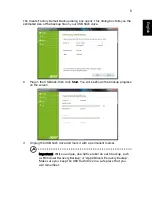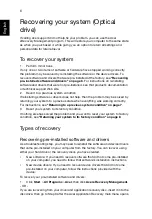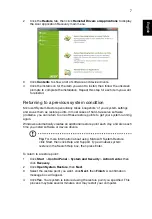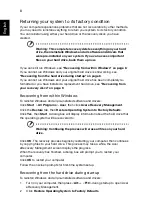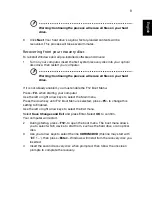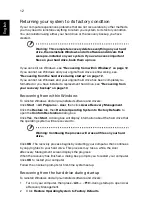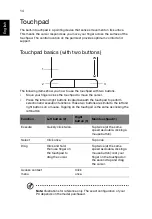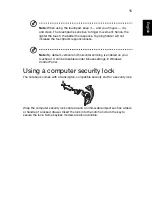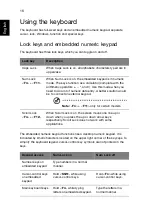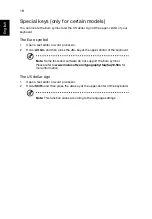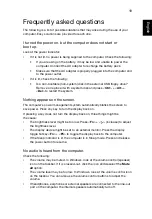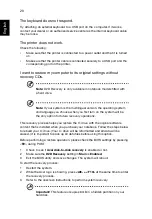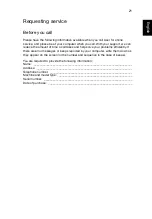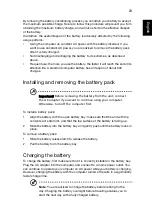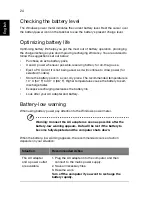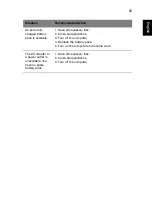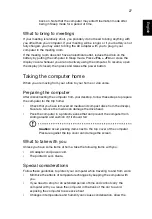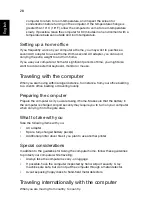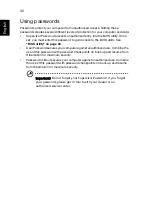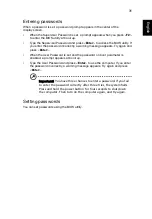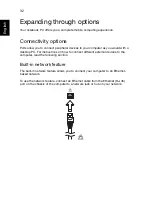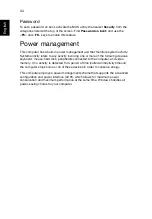
19
English
Frequently asked questions
The following is a list of possible situations that may arise during the use of your
computer. Easy solutions are provided for each one.
I turned the power on, but the computer does not start or
boot up.
Look at the power indicator:
•
If it is not lit, no power is being supplied to the computer. Check the following:
•
If you are using on the battery, it may be low and unable to power the
computer. Connect the AC adapter to recharge the battery pack.
•
Make sure that the AC adapter is properly plugged into the computer and
to the power outlet.
•
If it is lit, check the following:
•
Is a non-bootable (non-system) disk in the external USB floppy drive?
Remove or replace it with a system disk and press <
Ctrl
> + <
Alt
> +
<
Del
> to restart the system.
Nothing appears on the screen.
The computer’s power management system automatically blanks the screen to
save power. Press any key to turn the display back on.
If pressing a key does not turn the display back on, three things might be
the cause:
•
The brightness level might be too low. Press <
Fn
> + <
> (increase) to adjust
the brightness level.
•
The display device might be set to an external monitor. Press the display
toggle hotkey <
Fn
> + <
F5
> to toggle the display back to the computer.
•
If the Sleep indicator is lit, the computer is in Sleep mode. Press and release
the power button to resume.
No audio is heard from the computer.
Check the following:
•
The volume may be muted. In Windows, look at the volume control (speaker)
icon on the taskbar. If it is crossed-out, click the icon and deselect the
Mute
all
option.
•
The volume level may be too low. In Windows, look at the volume control icon
on the taskbar. You can also use the volume control buttons to adjust the
volume.
•
If headphones, earphones or external speakers are connected to the line-out
port on the computer, the internal speakers automatically turn off.
Содержание BRCM1050
Страница 1: ...Aspire One Series Generic User Guide ...
Страница 18: ......

